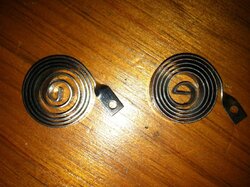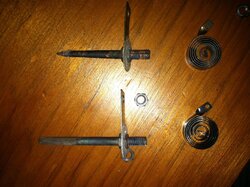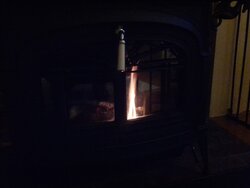Reckless
Feeling the Heat
So when its cold its closed and when its hot (1300) its closed but when its really hot (1700) its open? This is what I see when I watch it through the burn cycle. My stove thinks it should let cold air into the chamber when the cat gets to hot and closes as it cools down again.That sounds correct. If I understand it right the purpose of this control is to let more air into the cat chamber when the exhaust is cold, to aid light off and help it maintain cat temp. When its hot it closes down to limit the air supply. So seeing it close with the cat in the 1300+ range sounds right.
Reading into it I may need to do what this guy did or just close the secondary completely
https://www.hearth.com/talk/threads...-the-primary-air-flap-supposed-to-work.60072/Initially, I was asking the proper operation of the secondary air flap on the back of the stove. I was getting too hot, over-fire conditions, and could not control the burn temp. Up to and including 700 griddle temps almost all the time. This was frustrating, causing lack of sleep, etc.
I removed the 6x5 black cover on the rear of the stove, allowing me to view the operation of the secondary air flapper. When the stove would get hot the bi-metallic spring/lever would rotate from approx the 4 O-clock position to the 9 O-clock position. This was causing an opening of the secondary flapper, bringing in more air when Its hot.
I called my la VC dealer asking about the proper operation of this flapper. When I told him my idea of installing a stop screw to limit, He said "it sounds like you're on the right track.
So.......
Here are some pics of the fix.
Drilled and taped a 10-24 thread machine screw to limit the bi-metallic lever.
I also blocked off the EPA air holes on the bottom of the stove. Now I can regulate the burn! I can now achieve long night burn times, consistent temp range of 550-650, and the Northern lights effect instead of constant flame.
Sorry for the long post, I just wanted to share my fix!
I now love this stove, and I can sleep at night!
Thanks all for the advice!
I added magnets to the EPA holes on the bottom, and in
Last edited:




 Wheres defiant when you need him
Wheres defiant when you need him


 about the rebuild!
about the rebuild!